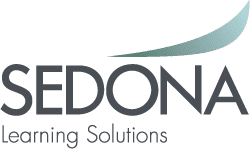
Casting a New Light on Learning Impact
 I recently read an article extolling Nelson Mandela’s accomplishments during his life. A quote by Ineke van Kessel really caught my attention. She said, “I think he managed to jump over his own shadow and think of the bigger goal for his nation and for his people.”
I recently read an article extolling Nelson Mandela’s accomplishments during his life. A quote by Ineke van Kessel really caught my attention. She said, “I think he managed to jump over his own shadow and think of the bigger goal for his nation and for his people.”
Wow. He jumped over his own shadow—what an interesting visual picture! What is a shadow but an image cast by a body intercepting light? It really got me thinking about the shadow learning has cast in our places of business. Have we intercepted the positive light of education and cast a shadow? Or have we become contented casting a shadow instead of being the light? Indulge me just a second while I explore that thought: If training and education are inherently a positive light, could they in fact have a shadow?
The learning industry was grounded in higher education. A place where learning is great just because it is learning – it expands our minds and helps us view the world differently. However, in business it is no longer palatable to provide education just because it is a great thing to do for our employees. The economy has changed, our finances have changed and so has the perceived need for providing education to our employees just because it is a nice thing to do.
So, the learning industry has responded by using words like outcomes and results. We are attempting to include such things as “alignment” and “corporate goals” in our verbiage. But is that enough? Results are great but what impact do our results have on the bottom line? Perhaps that is the question we really need to answer for our executives who must consider the bottom line.
It sounds like a small difference to compare results and impact, but in reality they have very different outcomes. Okay, so I have introduced yet another word that seems to have very similar meaning—outcomes. Results, Impact, Outcomes. A program can have results but have very little impact.
Obtaining results is an outcome but did the outcome have an impact on our organization? Do you see the difference? It isn’t enough to have an outcome. That outcome must impact the business, and must impact it in a positive manner. For example, we could provide training to an audience and obtain wonderful feedback and even prove that the participants learned something. That in itself is an outcome. However, did what they learn change or improve their performance? Did it contribute to reaching strategic goals? Did it ultimately impact the organization? We can’t just change our verbiage to include “results" and eliminate the shadow we have cast of being a cost center, a necessary evil, a nicety. We have to have a positive impact.
So, how do we move from results to impact?
In education, we do pretty well proving Kirkpatrick Levels I and II – Reaction and Learning. We have learned how to ensure that people learn. We provide creative learning experiences and we create learning assessments to prove our participants have learned something. Reaction and learning alone represent a result. However, both of those are pretty meaningless to our executives unless they lead to impact. They are valuable to us as learning professionals to show us we are on target to reach larger goals but levels 1 and 2 are not so valuable to executives. They are building blocks in evaluation and measurement but not the entire picture. Executives expect learning to take place (results) but really want an impact to the business.
Step One — Begin with the End
The most necessary step in obtaining impact is beginning with the end in mind. Often we are asked as educators to provide education on “x” topic. We happily go about creating a fabulous learning event; however, it may be misdirected. Have we asked “why” they want training on this topic? Do we know what the goals of the organization are and how this topic relates? Do we know what impact our executives are really looking for? Without truly understanding these questions we may well have a result but not a result that impacts the business.
I find that executives are so use to the shadow learning casts that they are not expectant of learning truly being interested in the bottom line. They have become complacent in expecting “results” but don’t really think “impact” is something we can deliver. Therefore, they usually do not convey this type of information. As a matter of fact, if we as educators start asking question about desired results or impact, they may not know how to answer us. We may catch them off guard. Beginning with the end in mind is the first step to jumping over our shadows and making an impact.
Step Two — Intentionally Design & Deliver
We have to be sure we are designing and delivery our programs for more than results. So how do we do this? Once we begin with the end in mind, we must design for targeted results and measure to show not only results, but impact.
During the design process, keep the end in mind. Do not allow yourself to veer into including unnecessary information that may be nice but in reality only confuses the learner. During delivery, whether using web-based learning or classroom, be sure to direct the participant to the true goal. Help them understand “why” they need to learn the information or skill and how it can potentially impact their organization. Seeing the bigger picture truly helps adults grasp information and push to performance. After the formal learning, make it your business to “drive” target results so that impact is reached.
Step Three — Measure
Many scientists have conducted studies to prove or disprove a theory. They obtain results. In business we need targeted results, which impact the organization. Beginning with the end in mind, monitoring reaction, learning and performance, adjusting to ensure performance is occurring and watching to see if leading indicators show us we are on target to obtain intended impact is crucial.
Learning and performance are not an exact science because we have varied learners and motivation. That is why, unlike pure science, we must drive the results we want. We must jump our shadow by shedding light and directing outcomes until we impact the goal.
Step Four — Analyze & Record
Never stop short of documenting your outcomes. Measurement ensures we are on track but failing to document your measurement and impact leaves you in the shadows. Document your measurements, create a one-page executive summary focusing on the impact your efforts have had on the corporate goals, and be sure to manage the results and impact up to your leaders. This is the step that truly lets you step out from behind the shadows.
Be the Light
Jumping your shadow to be the light means being proactive. It drives performance throughout the learning process instead of trying to prove a return afterwards.

